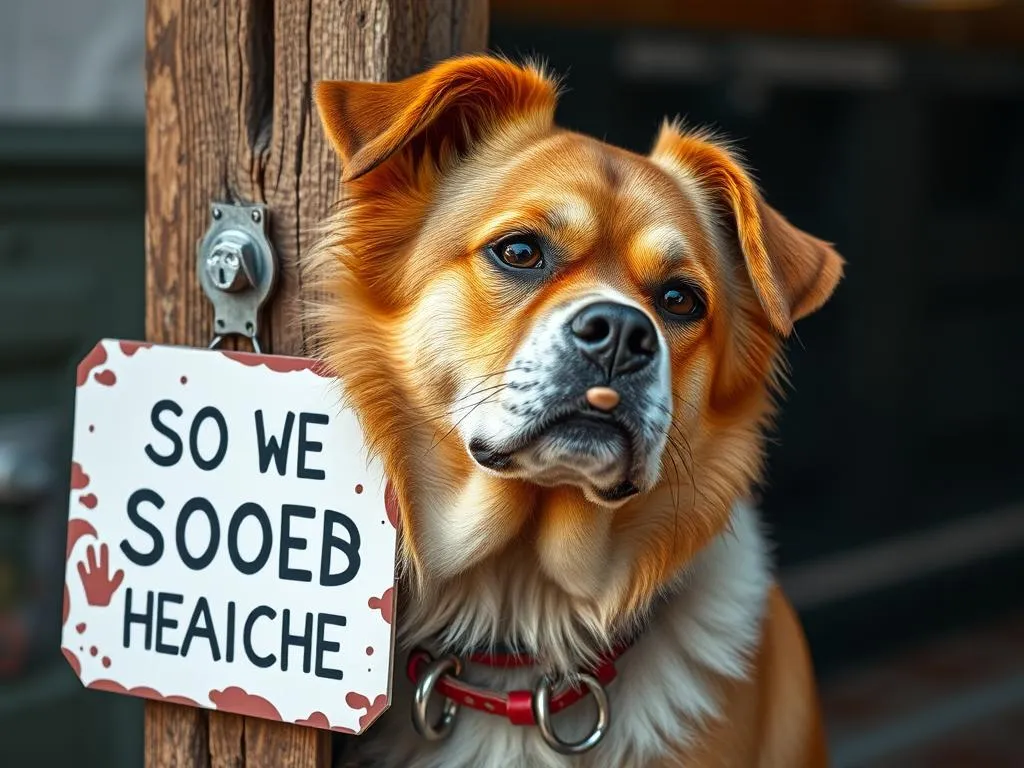
Recognizing the signs a dog is uncomfortable is crucial for any pet owner. Dogs, much like humans, experience discomfort for various reasons, whether due to health issues, environmental stressors, or situational anxieties. As loving companions, they often don’t vocalize their pain or discomfort in obvious ways, making it essential for owners to be vigilant and observant of their behavior.
Understanding Dog Behavior
Normal vs. Uncomfortable Behavior
To effectively identify discomfort in dogs, it’s important first to understand what constitutes normal behavior. A typical dog exhibits playful and curious tendencies, enjoys spending time with their family, and shows a range of emotions, from excitement to contentment.
In contrast, signs a dog is uncomfortable can manifest as subtle shifts in these behaviors. For instance, a normally playful dog may become withdrawn or reluctant to engage in play. Recognizing these shifts is vital to ensuring your dog’s well-being.
Importance of Observing Behavioral Changes
Behavioral changes can often serve as the first indicators that something is wrong. A dog that suddenly starts to avoid interaction or displays signs of anxiety may be trying to communicate discomfort. As a responsible owner, your role involves monitoring your dog’s behavior and being attentive to any deviations from their norm. This vigilance can be the first step in identifying potential health issues or environmental stressors.
Common Signs of Discomfort in Dogs
Physical Signs
Physical manifestations of discomfort can be quite telling. Here are some common indicators to watch for:
- Changes in Posture: Dogs that are uncomfortable may crouch, hide, or exhibit a tense posture.
- Signs of Distress: Excessive panting, pacing, or restlessness can indicate that a dog is feeling uneasy.
- Changes in Appetite: A sudden decrease in appetite or an aversion to food can be a clear sign of discomfort.
- Excessive Grooming or Licking: Dogs may lick or groom specific areas excessively if they are experiencing pain or irritation.
Vocalizations
Vocalizations are another avenue through which dogs express discomfort. While barking is a common behavior, pay attention to the tone and frequency:
- Whining: This can indicate distress or discomfort.
- Growling: Often a sign of irritation or pain, especially if your dog isn’t typically aggressive.
- Changes in Barking Patterns: A dog that suddenly barks more than usual may be trying to communicate their discomfort.
Changes in Social Behavior
The social behavior of dogs can also reveal discomfort:
- Withdrawal from Family: A dog that previously enjoyed being around you but now retreats may be feeling unwell or anxious.
- Increased Aggression or Irritability: If your dog becomes more aggressive or irritable, it could indicate pain or discomfort.
Specific Situations Where Dogs May Feel Uncomfortable
Health Issues
Various health conditions can cause discomfort in dogs. Some of the common ailments include:
- Arthritis: This joint condition can make movement painful, leading to signs such as limping or reluctance to climb stairs.
- Dental Issues: Pain from dental problems can cause dogs to avoid chewing or show a preference for softer food.
- Gastrointestinal Problems: Conditions like bloating can lead to signs such as pacing, whining, or adopting a hunched posture.
Recognizing these signs a dog is uncomfortable related to specific health issues can help you seek timely veterinary care.
Environmental Stressors
Environmental factors can also contribute to a dog’s discomfort:
- Loud Noises: Fireworks, thunderstorms, or other loud sounds can cause significant distress to dogs. They may hide, shake, or try to escape from the source of the noise.
- Changes in Routine: Moving to a new home or introducing a new pet can disrupt a dog’s sense of security, leading to anxiety or discomfort.
Situational Discomfort
Certain situations can provoke discomfort in dogs:
- Car Rides: Some dogs may experience motion sickness or anxiety during car rides, leading to whining, drooling, or restlessness.
- Vet Visits: The unfamiliar environment and procedures can cause stress and discomfort, making it crucial to recognize signs of anxiety.
- Grooming Sessions: Dogs may not enjoy grooming, especially if it involves unfamiliar tools or techniques. Signs of discomfort can include whimpering or attempting to escape.
How to Assess Your Dog’s Comfort Level
Regular Health Check-ups
Regular veterinary visits are essential for maintaining your dog’s health. Routine check-ups can help identify underlying issues before they develop into more serious problems. Discuss any behavioral changes with your veterinarian, as they can provide insights into potential health concerns.
Home Observations
Monitoring your dog’s daily behavior is crucial. Here are some tips for effective observation:
- Daily Behavior Monitoring: Take note of your dog’s energy levels, eating habits, and social interactions. Changes in these areas can signal discomfort.
- Keeping a Dog Journal: Documenting observations can help you track patterns over time, making it easier to identify any concerning changes.
Consult a Professional
Knowing when to seek help is important. If you notice significant changes in your dog’s behavior, consult a veterinarian or a certified animal behaviorist. Professional evaluations can provide clarity and guidance, especially in severe cases.
Providing Comfort and Care
Immediate Actions to Take
If you recognize signs a dog is uncomfortable, consider the following immediate actions:
- Create a Safe Environment: Provide a quiet, comfortable space where your dog can relax and feel secure.
- Monitor Their Condition: Keep a close eye on their behavior and any physical signs, and be prepared to seek veterinary assistance if necessary.
Long-term Care Strategies
To promote long-term comfort and health, consider the following strategies:
- Nutrition and Exercise: A balanced diet and regular exercise are crucial for maintaining a healthy weight and overall well-being.
- Mental Stimulation: Engage your dog in activities that stimulate their mind, such as puzzle toys or training exercises, to help keep them happy and fulfilled.
Alternative Therapies
Exploring holistic options can also provide additional comfort for your dog:
- Acupuncture: This ancient practice can alleviate pain and improve overall health, especially in older dogs or those with chronic conditions.
- Massage: Gentle massage can help soothe anxious or uncomfortable dogs, promoting relaxation and comfort.
- Natural Remedies: Certain herbal remedies may help alleviate anxiety and discomfort. Always consult with your veterinarian before introducing new treatments.
Conclusion
Recognizing the signs a dog is uncomfortable is a vital aspect of responsible pet ownership. By being observant and proactive, you can ensure your dog remains healthy and happy. Monitor their behavior, consult professionals when needed, and provide a nurturing environment to help your furry friend thrive. Taking these steps can make a significant difference in your dog’s quality of life, allowing them to enjoy their time with you to the fullest.









